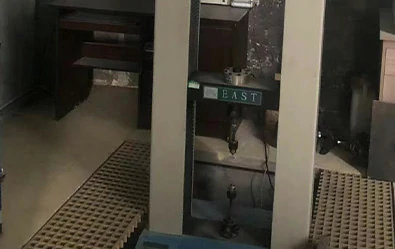loading...
- No. 9, Xingyuan South Street, Dongwaihuan Road, Zaoqiang County, Hengshui, Hebei, China
- admin@zjcomposites.com
- +86 15097380338
- Welcome to visit our website!
floor grating
Understanding Floor Grating A Multifaceted Solution for Modern Spaces
Floor grating has emerged as an essential component in various architectural and industrial applications. Its versatility, durability, and practicality make it an ideal choice for environments ranging from commercial buildings to industrial facilities. This article delves into the concept of floor grating, exploring its types, advantages, applications, and maintenance.
What is Floor Grating?
Floor grating refers to a structural element composed of a series of interconnected bars that create a pattern of open spaces. The primary purpose of floor grating is to allow for the passage of liquids, light, and air while providing a stable surface for foot traffic or equipment. Typically made from materials such as steel, fiberglass, and aluminum, floor grating is available in various shapes, sizes, and load-bearing capacities to suit diverse needs.
Types of Floor Grating
There are primarily three types of floor grating commonly used in different settings
1. Steel Grating Known for its strength and durability, steel grating is often used in industrial applications where heavy loads and harsh environments are commonplace. It typically comes in welded, riveted, or swage-locked designs, providing excellent support and stability.
2. Fiberglass Reinforced Plastic (FRP) Grating This type of grating is corrosion-resistant and lightweight, making it ideal for environments where chemical exposure may occur, such as wastewater treatment plants or chemical processing facilities. FRP grating is non-conductive and offers a high degree of slip resistance, ensuring safety in slippery conditions.
3. Aluminum Grating Combining strength with lightweight properties, aluminum grating is suitable for both indoor and outdoor applications. It is resistant to corrosion, making it an excellent choice for marine environments or areas exposed to moisture.
Advantages of Floor Grating
The benefits of floor grating are numerous, including
floor grating

- Enhanced Safety The open design of floor grating allows for excellent drainage, minimizing the risk of stagnant water that can lead to slips and falls
. Some types offer slip-resistant surfaces, further enhancing safety measures in high-traffic areas.- Increased Durability Floor grating is designed to withstand heavy loads and physical wear, a crucial factor in industrial settings where equipment and machinery operate regularly.
- Versatile Applications From pedestrian walkways to heavy-duty industrial platforms, floor grating can be utilized in a variety of scenarios. It is commonly found in factories, warehouses, parking garages, and outdoor spaces.
- Cost-Effective The durability of floor grating reduces the need for frequent replacements, offering long-term savings on maintenance and upkeep.
- Aesthetic Appeal With a variety of materials and finishes available, floor grating can enhance the visual appeal of a space while maintaining functionality.
Applications of Floor Grating
Applications for floor grating are vast and varied. In industrial settings, it is often used for walkways, platforms, and drainage systems. In commercial spaces, it can serve as flooring for outdoor patios, service areas, and retail spaces where both aesthetics and functionality are crucial. Additionally, floor grating finds its place in public infrastructures like bridges and airport terminals, providing safe and efficient pathways for large volumes of foot traffic.
Maintenance of Floor Grating
Maintaining floor grating is essential to ensure its longevity and performance. Regular inspections should be conducted, focusing on potential corrosion, buildup of debris, or structural integrity. Cleaning should be performed as needed, especially in environments where chemicals or oils are present. For steel and aluminum options, periodic treatment with protective coatings can enhance resistance to corrosion.
Conclusion
Floor grating is a remarkable solution that offers a blend of safety, durability, and versatility across various applications. By understanding the different types of floor grating and their advantages, architects, builders, and facility managers can make informed decisions that enhance the functionality and safety of their spaces. As industries continue to evolve, the role of floor grating remains pivotal in catering to the challenges and demands of modern infrastructure.
-
The Rise of FRP Profiles: Strong, Lightweight, and Built to LastNewsJul.14,2025
-
SMC Panel Tanks: A Modern Water Storage Solution for All EnvironmentsNewsJul.14,2025
-
GRP Grating: A Modern Solution for Safe and Durable Access SystemsNewsJul.14,2025
-
Galvanized Steel Water Tanks: Durable, Reliable, and Ready for UseNewsJul.14,2025
-
FRP Mini Mesh Grating: The Safer, Smarter Flooring SolutionNewsJul.14,2025
-
Exploring FRP Vessels: Durable Solutions for Modern Fluid HandlingNewsJul.14,2025
-
GRP Structures: The Future of Lightweight, High-Performance EngineeringNewsJun.20,2025
